Advice, Collections, Informative
Epimedium for Australian gardens
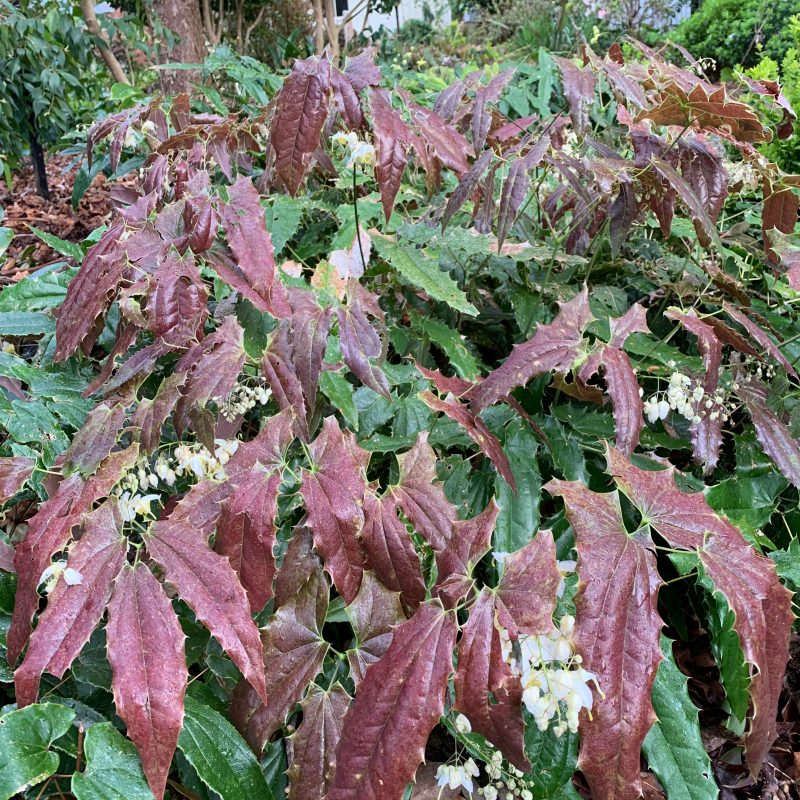
Overview
Epimedium is a genus of woodland perennials in the family Berberidaceae.They have a number of common names including barren wort, horny goat weed, bishops hat and yin yang huo. Some of the names refer to their use in treating erectile disfunction. They have a long history of usage in traditional Chinese medicine.
There is around 60 species and countless cultivars. They are highly collectable and some Australian gardeners hold substantial collections. Here at Gentiana I have around 80 species and hybrids which would be considered modest by some but excessive by others.
They can be roughly divided into 2 groups, those that originate in Asia and those from the Mediterranean. The later being considered hardy the former desirable. The Mediterranean species are evergreen and can be grown in dryish shade, some spread and others stay in a clump. The Asian species and their hybrids generally require good soil, deep mulch and some moisture over the dry months.

Why grow Epimedium ?
All Epimedium flower in spring and come in a range of colours. They can be evergreen or deciduous. Some species flower inside last years foliage so these ones are best cut to the ground in mid winter, the most notable of these is Epimedium versicolor var. neosulphureum. Others mostly from the Asian group hold their flowers way above the foliage and can be very showy. My initial attraction to them was for Flower colour but now I select for foliage which can be spectacular.
Along with the spring flowering comes some spectacularly marked leaves, some randomly spotted some with red veins and others solid deep red. This leaf colouration can return again in Autumn particularly if they get some early morning sun. Epimedium are useful in the shade garden because their leaf shapes contrast so nicely with strap leaf plants such as Arthropdium. Varieties with long slender leaves can highlight large leaf shrubs or perennials.
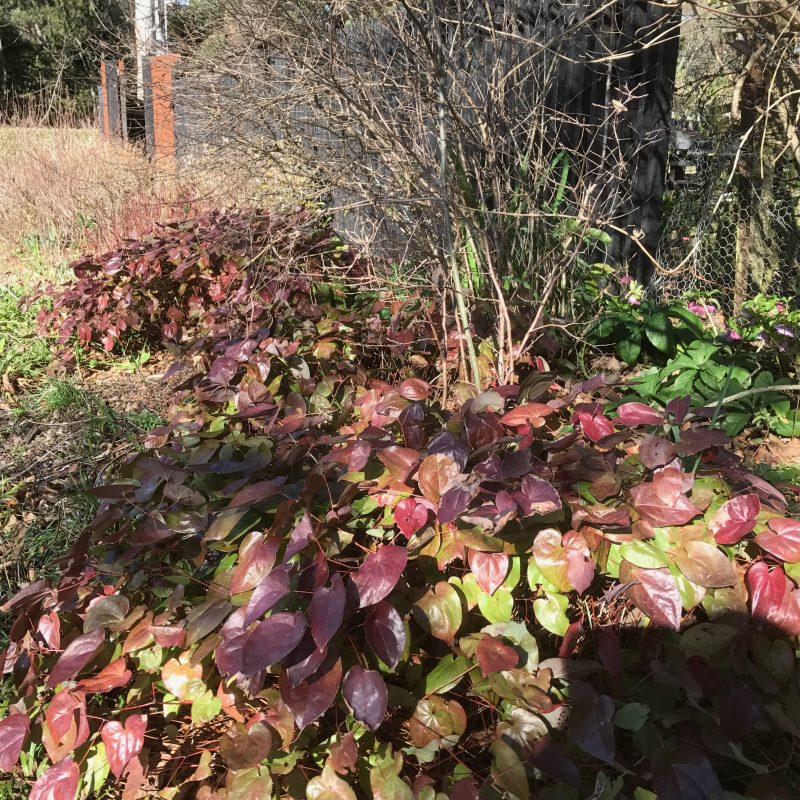

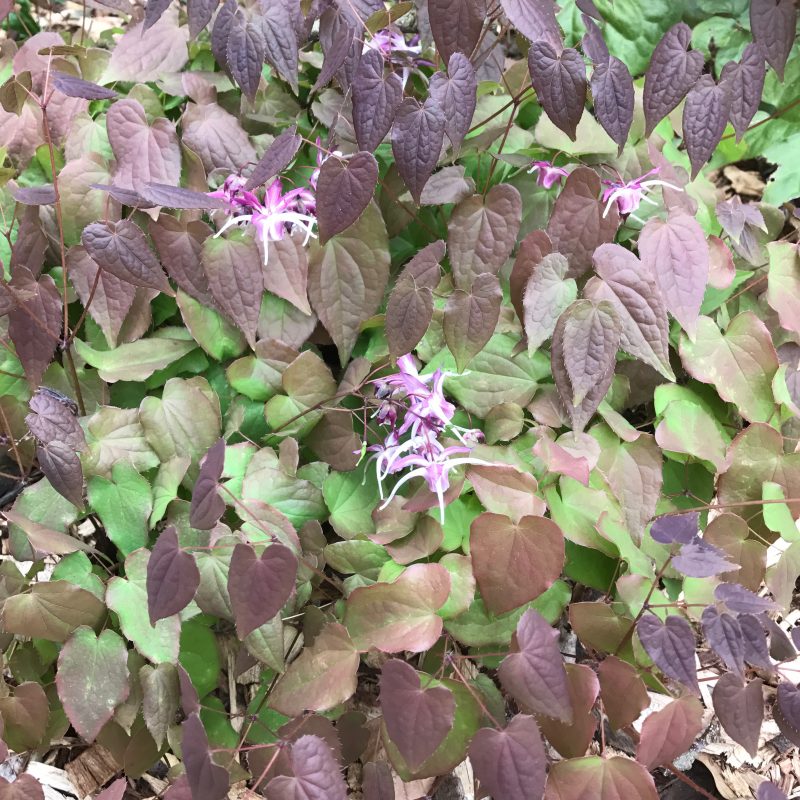
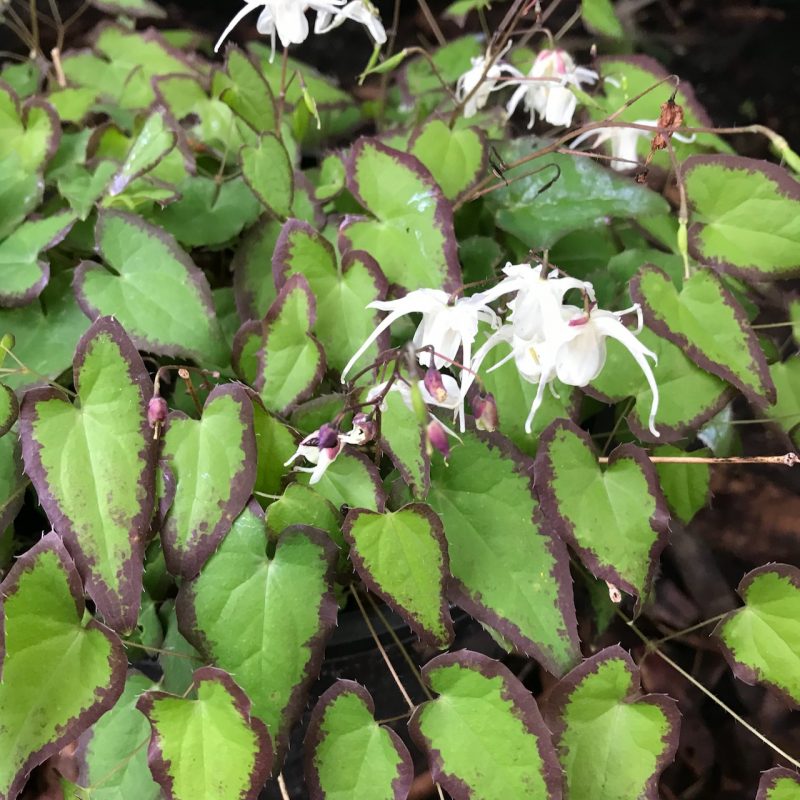
Varieties
The Mediterranean species

This group are the most dry tolerant so are well suited to Melbourne gardens. Perralderianum and its hybrid frohnleiten are very hardy but unfortunately also dreary. Their yellow flowers are sparse and foliage while evergreen lacks the drama of other species. They can however be useful used as a ground cover in difficult conditions. The foliage of frohnleiten contrasts nicely with Clivea.
Versicolor var. neosulphureum is superb its flowers are the softest yellow and abundant. The new foliage in spring has very obvious red veining then in autumn and winter the leaves can turn a deep wine red. The hybrid cherry tart has pink flowers and all the good attributes of its parent. These x versicolor hybrids should be cut to the ground in mid winter so the flowers and new foliage are clearly visible.
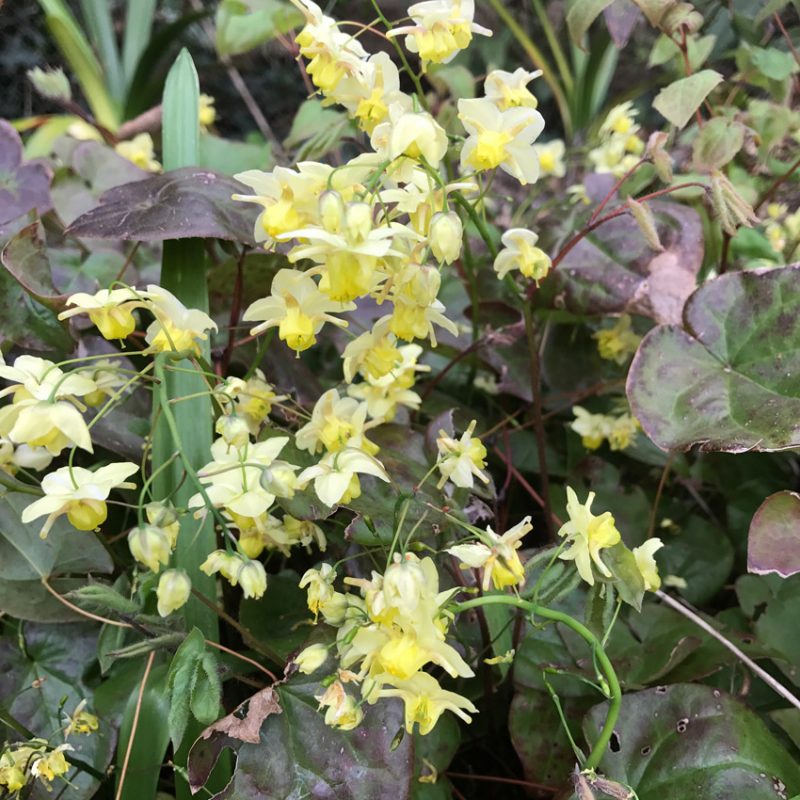
There is another in this group worth a mention, Epimedium pubigerum. This one has white flowers which sit way above its foliage and stays in a tight clump. Its foliage remains green throughout the year and seems to be unfazed by summer heat.
There are hybrids between Mediterranean and Asian species, Epimedium x rubrum being a very fine example. It has red spring foliage and flowers
The Asian species

It is amongst this group that the real stars of the genus sit. This is a large group of plants and because my collection is modest I can only cover a very few. The most freely available are grandiflorum and its cultivars and sometimes x youngianum and cultivars. Both of these are bred for flowering. I have seen these plants on the East coast of North America where their flowering is spectacular. Here in Australia not so much, most of them grow and increase for me but their flowering can be sparse, the flowering stems short and foliage tatty after the first hot spell, this can be overcome by growing them as tub plants. Other Asian species are well worth growing. Wushanense and cultivars are the giants of the genus. Each year they get a little taller, in time they can reach 1m. The elongated serrated leaves are red in spring fading to green. The flowers soft yellow or rich cream.
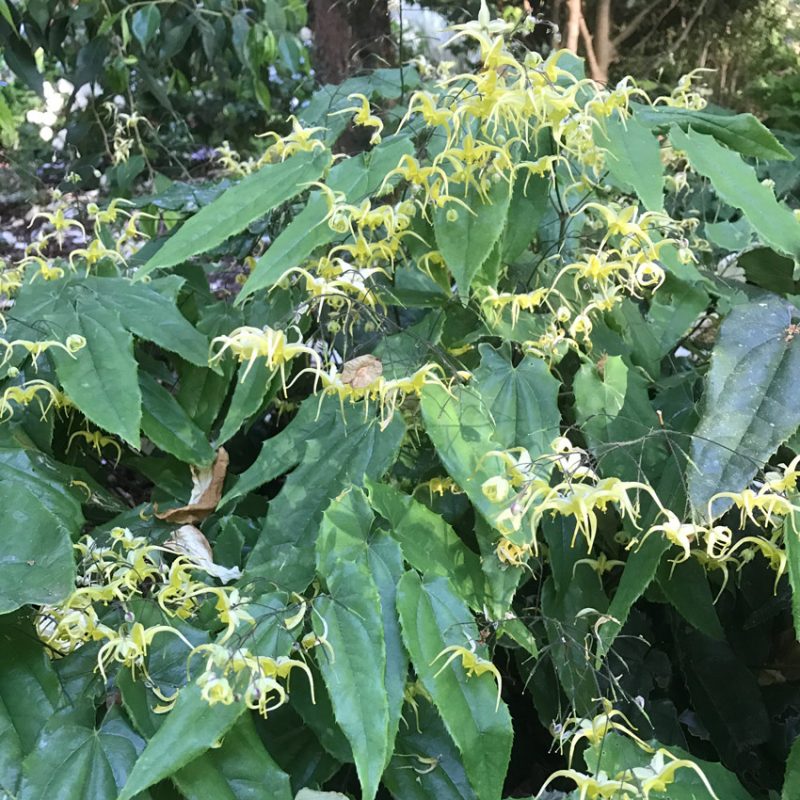
Epimedium omiense is the parent of many cultivars, their flowering is very similar but their foliage is very good and provides year round interest.
Rhizomatosum is another very good species, its flowers are also cream but much later than any other species, it can extend into early summer. The foliage is marked red and this intensifies as the season progresses.
Amber queen is a long flowering cultivar. Its flowers are held way above the foliage which seems to hold up over a hot summer.
Myrianthum from China sends up sprays of tiny white flowers and its foliage is heavily mottled red in spring.
Dyphyllum is a small species from Japan. This one has the most exquisite leaf markings in spring and pure white flowers.
Epsteinii is a ground cover species from China. The foliage only grows to 15cm and it has the capacity to spread at a reasonable speed. The Purple flowers are held inside its foliage.
Enchantress is another low spreading type with serrated leaves marbled red in spring. Its flowers are pink
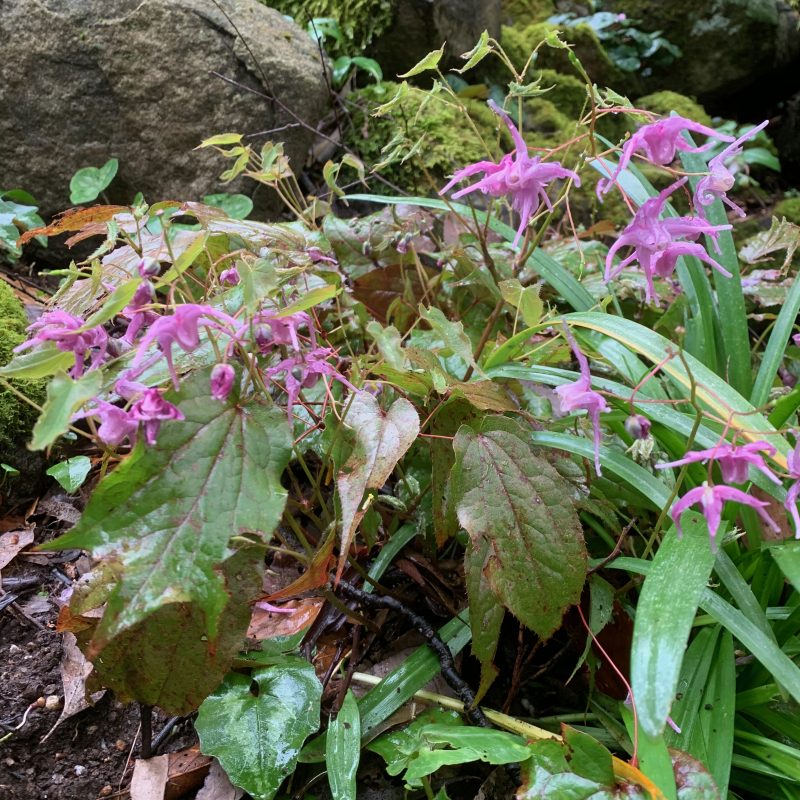
Cultivation advice
All Epimedium are woodland plants because of this they require protection from hot afternoon sun. Gentle morning sun is helpful but not necessary. The advantage of some morning sun is more prolific flowering and pronounced leaf colouration during the cooler months.
The most important requirement for these plants is deep rich leaf litter and mulch.When to use mulch
The need for humus rich soil can’t be emphasised enough. Insufficient mulch will result in the plants having small leaves browned on the margins and a clump that never expands.
Fertilisers always help, they should be organic and be spread under the mulch layer.
Epimedium make excellent tub plants because they thrive on root restriction so can remain potted for many years. As with all potted plants feeding is essential.How to feed plants. A regular fertilising regime over the growing season will result in more flowers and improved foliage colour.
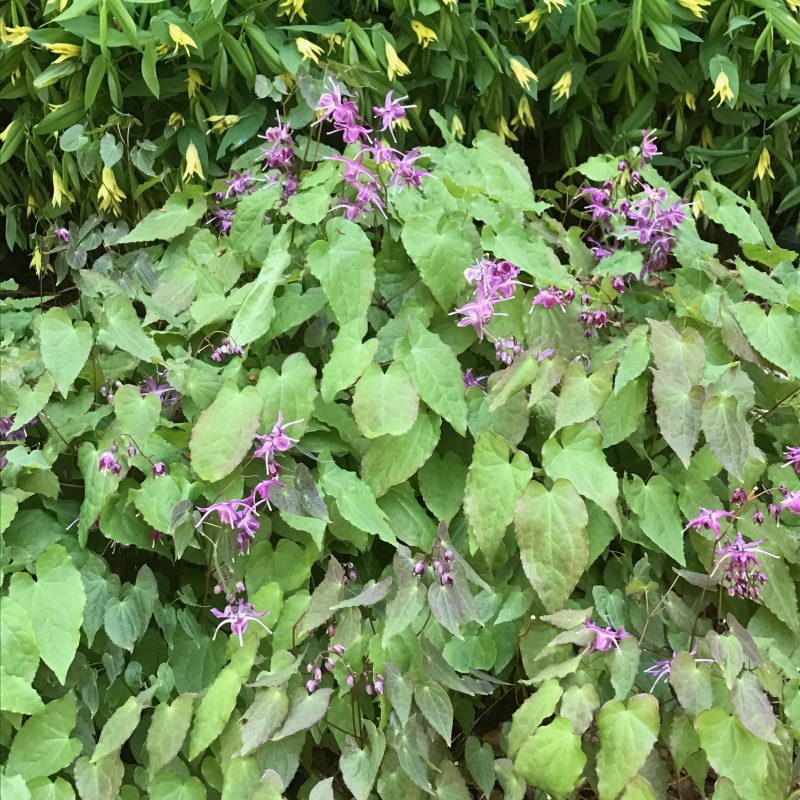

Are they invasive in Melbourne?
Definitely not